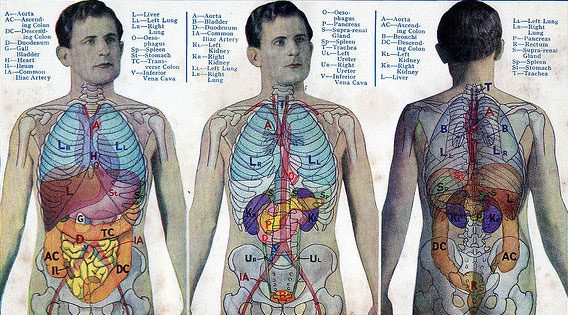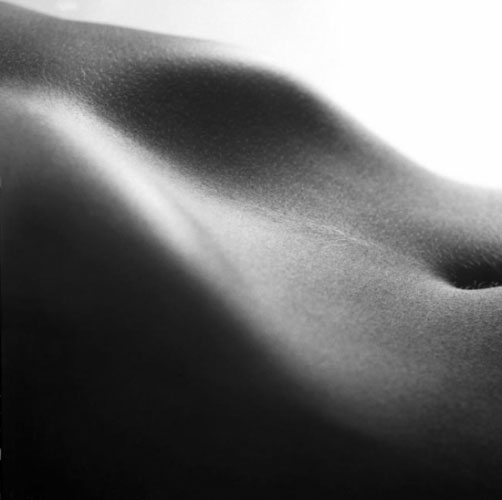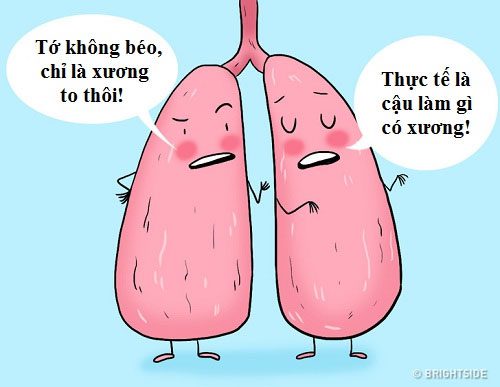The human body, composed of approximately 50 trillion cells, is an incredibly complex living organism that harbors many unexplored mysteries.
1. A powerful heart. On average, the heart beats about 100,000 times a day, pumping more than 7,500 liters of blood to nourish the body.
2. An extensive circulatory system. Blood travels through a network of arteries, capillaries, and veins. In adults, if these blood vessels were laid end to end, they would stretch approximately 96,000 kilometers. This means the total length of blood vessels in an adult is 2.5 times the circumference of the Earth.
3. The miraculous kidneys. Each kidney contains about one million filtering units called nephrons. The kidneys can filter 120-150 liters of blood each day, producing around 2 liters of urine.
4. Length of the intestines. The total length of the intestines is about 7.5 meters, roughly four times the height of an adult. Fortunately, they are neatly tucked away in the abdominal cavity.

The human body has many mysteries. (Image credit: Tiffan Terry/Flickr)
5. Saliva production. Humans have salivary glands around the mouth and throat that help moisten food, initiate digestion, and protect teeth from decay. On average, an adult produces about 1.8 liters of saliva each day.
6. The astonishing speed of a sneeze. A sneeze can release 40,000 tiny droplets into the air at a speed of 160 km/h. Therefore, we should cover our mouths when sneezing to avoid affecting others.
7. Body odor. Each person has a completely unique scent, much like fingerprints, except for identical twins who may share a similar smell.
8. Skin area. The skin of an adult has an area of about 2 square meters and weighs around 4 kg.
9. Continuous shedding of dead skin cells. Humans shed approximately 50,000 dead skin cells each minute. The total amount of dead skin on Earth is estimated to be about 1 billion tons.
10. The number of hairs on the body. Humans appear smoother and less hairy than other primates. However, in reality, the number of hair strands on a human body is comparable to that of a chimpanzee.
11. Body energy. The heat produced by a body depends on weight and activity level. An average person consumes 2,400 kcal daily, generating about 100 kcal per hour, equivalent to the energy needed to power a 116W light bulb.
12. Sense of smell. The human brain can process around 10,000 different scents in an area the size of a postage stamp.
13. The tongue resembles an octopus tentacle. The tongue is made up of 8 distinct muscles. Unlike other muscles, the tongue is not supported by a skeletal framework; instead, the muscles interweave, creating a flexible structure similar to an elephant’s trunk or an octopus’s tentacle.
14. The number of atoms in the body. An adult is composed of approximately 7×10^27 (7 octillion) atoms.
15. The chemical elements that make up the body. Humans are made up of six main elements: oxygen, carbon, hydrogen, nitrogen, calcium, and phosphorus. Among these, the three most abundant elements are oxygen (65%), carbon (18.6%), and hydrogen (9.7%).
16. The human eye is extremely sensitive; imagine if the Earth were flat, you could see a candle flame 30 miles away on a clear night.
17. Nerve impulses travel to and from the brain at a speed of 250 miles per hour, faster than a Formula 1 racing car.
18. The human brain can read 1,000 words per minute.
19. Your navel contains thousands of bacteria, which can form a scale equivalent to an ecosystem.

The human navel contains a lot of bacteria.
20. A single hair can support a weight of 12 tons.
21. In about 30 minutes, the human body can generate enough heat to boil 1 liter of water.
22. The atoms that make up the human body today were formed during the Big Bang 13.7 billion years ago.
23. Human bones are as hard as granite; a bone the size of a matchstick can support a weight of 9 tons.
24. If the human brain functioned like a computer, it could perform 38 trillion calculations per second, whereas the world’s most powerful supercomputer, BlueGene, can only handle 0.002% of that.
25. In one day, blood travels 12,000 miles throughout the body.
26. Neurons connecting the brain resemble the structure of the universe.
27. The human body can produce 25 million cells every second.
28. The human body can bioluminesce, emitting light that is 1,000 times weaker than the normal light perceivable by the human eye.
29. Inside the human body, there is approximately 0.2 milligrams of gold, mostly in the blood, and you would need about 40,000 people to gather enough gold for a single 8-gram coin.
30. The human brain needs to use 20% of the body’s oxygen and calories, despite only accounting for 2% of an adult’s total body weight.
31. Some women can see more colors than the average person; most people have 3 types of color receptors, while many women have up to 4 or 5 receptors.
32. Crying helps relieve stress and allows humans to express feelings of anger or sadness. The composition of tears varies depending on the reason for crying.
33. The cornea of humans is very similar to that of sharks. Shark corneas are so similar to human ones that they could potentially be used for transplants if the proper technology exists.

34. Humans lie more convincingly when they need to use the restroom. When the bladder is full, people tend to lie more convincingly due to the urgent need to relieve themselves, which makes them focus more on self-control.
35. You can have garlic breath without eating garlic. Rubbing garlic on your feet will let you taste it in your mouth within 30 minutes. This happens because allicin, an organic compound found in garlic, can penetrate cell membranes, traveling through the bloodstream to the taste receptors concentrated on the tongue. This is why garlic lovers not only have breath that smells of garlic but also their entire body.
36. The right lung is larger than the left lung. The volume and size of the two lungs in your body are different. The right lung is heavier and larger than the left lung due to the heart being positioned between the two lungs and slightly tilted to the left.

37. Hiccups are a remnant of our prehistoric ancestors. Hiccups are a leftover trait from our ancestors who lived 370 million years ago. At that time, humans often swam in the sea. With the help of the mechanism we call hiccups, they could protect their lungs from water entering.
38. A person’s blood can attract millions of mosquitoes. The body of a person has enough blood to attract 1.2 to 1.8 million mosquitoes. The specific number depends on the height and weight of the individual, as well as the hunger level of the mosquitoes. A mosquito consumes about 0.003 ml of blood with each bite.


















































